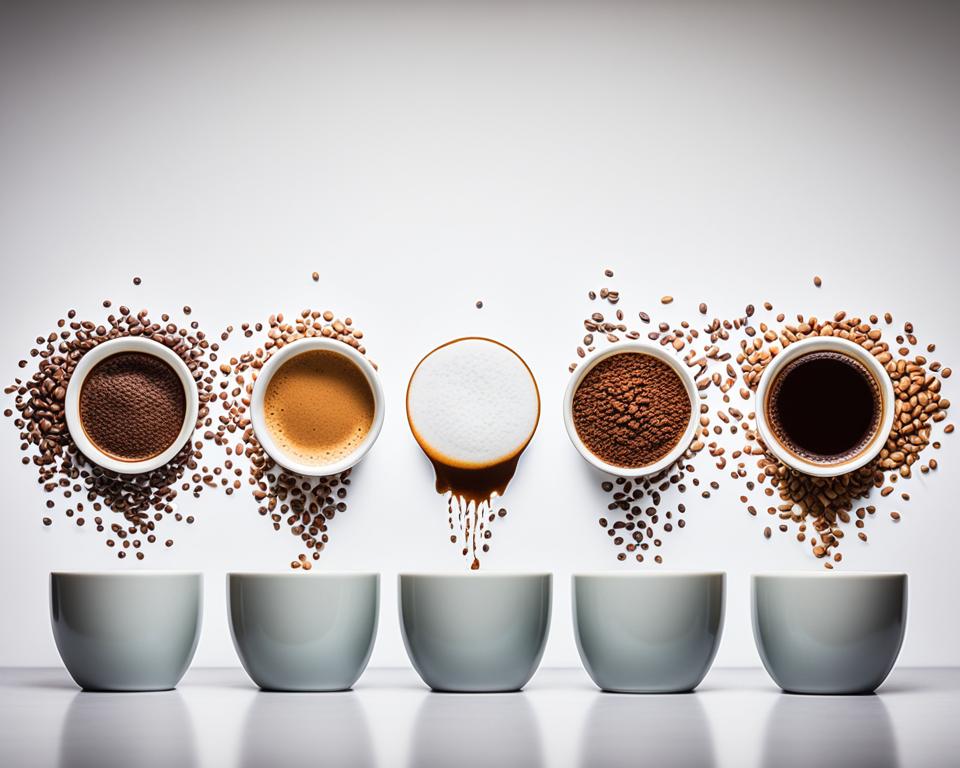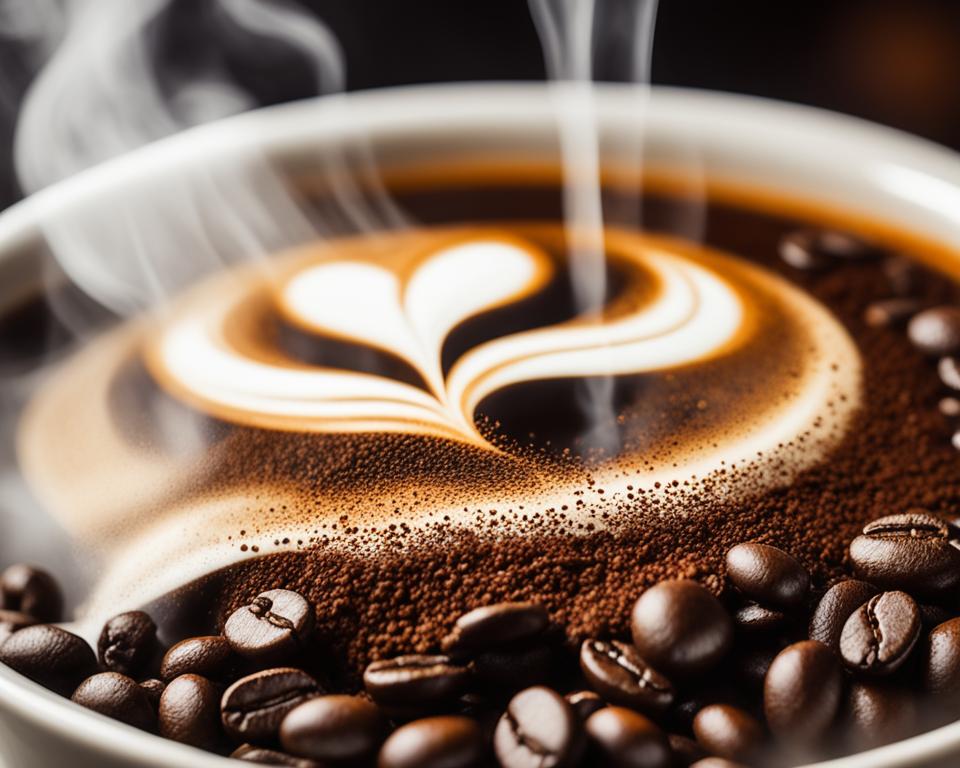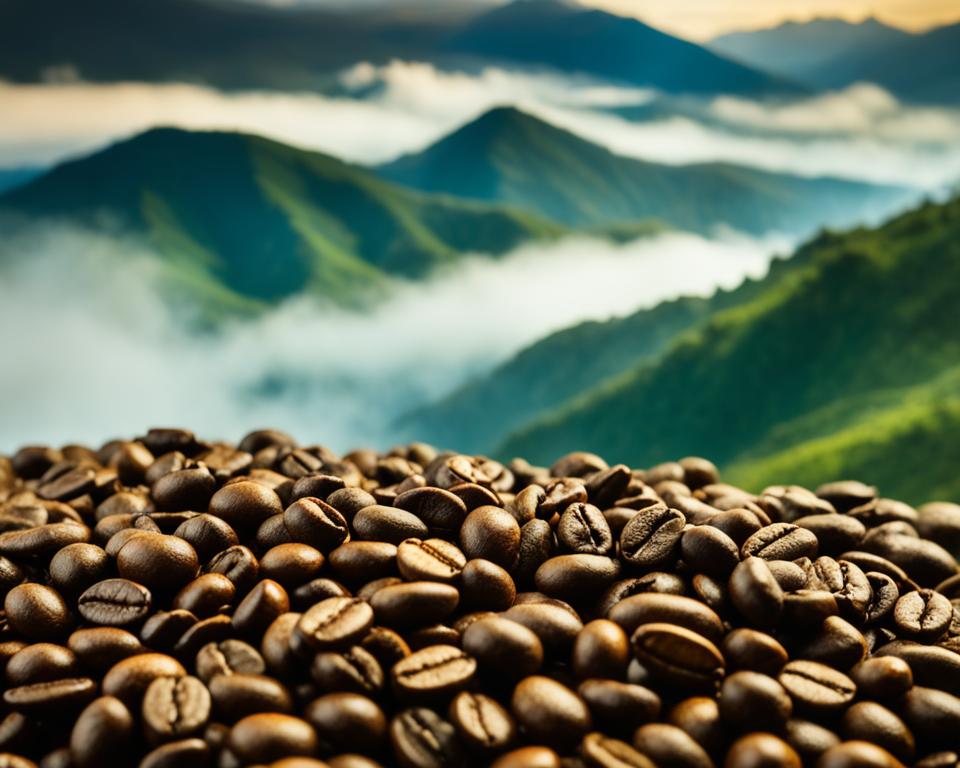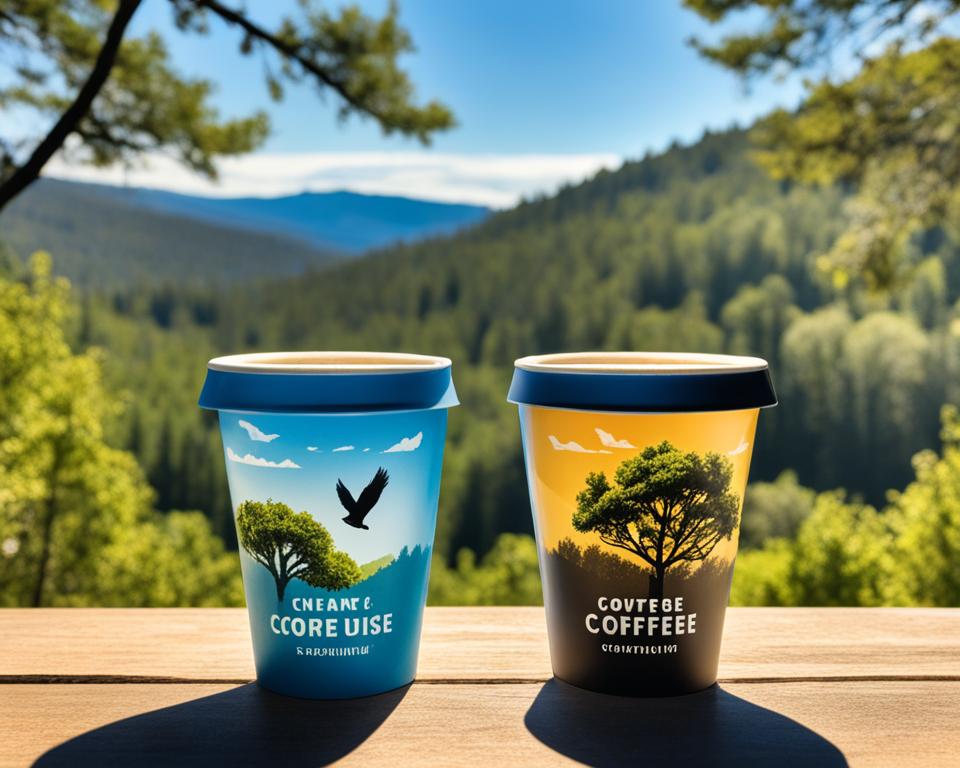Did you know that over 60% of the world’s coffee comes from Central and South America? This makes it the perfect setting for me to enjoy a coffee adventure. I’m comparing the rich flavours of Central vs. South American coffee. From Colombia’s green mountains to Guatemala’s volcanic lands, each place has its own special coffee taste.
This article looks at what makes coffee from Central and South America so unique. How do things like height, weather, and farming impact the taste? This taste test offers a chance to enjoy different coffees.
It also starts a journey to learn more about the history and how coffee is made in these lively places. So, let’s enjoy some coffee and find the best spot for your taste.
Key Takeaways
- Central and South America produce over 60% of the world’s coffee.
- Factors like height, weather, and soil give these coffees their special tastes.
- This taste test will look into the wide range of smells and flavors that Central and South American coffees offer.
- This article wants to show the history, culture, and growing ways that shape these places’ coffee tastes.
- You’ll better know which coffee region matches your taste by the end of this journey.
Exploring Coffee Origins: Central and South America
Looking into the origin of coffee, Central and South America are the top regions for great coffee. They have varied landscapes that affect the taste of their coffee beans.
Their history of growing coffee also plays a big part in the flavours we enjoy today.
Geographical Influence on Coffee Flavors
The land shapes the flavours of coffee in Central and South America. Different climates, altitudes, and soils make each region’s beans taste unique.
Colombia’s high altitudes help their Arabica beans taste vibrant and complex. Meanwhile, Brazil’s vast lands create Santos beans, known for their soft, nutty taste.
Historical Context of Coffee Production
Coffee has a long history in Central and South America, dating back to the 18th century. It quickly became a major part of their economy. Places like Guatemala and Costa Rica have tied coffee to their cultures.
This has influenced their social life and trade. Knowing this history helps us appreciate their signature coffee beans.
Key Regions and Their Signature Beans
In Central and South America, you’ll find special coffee beans from different regions. Colombia is known for its Arabica beans, which are well-balanced and bright. On the other hand, Brazil’s Santos beans are mild and great for espresso.
Guatemala’s beans have hints of chocolate and spices, while Costa Rica’s beans are loved for their zest and sweet touch.
| Country | Signature Bean | Flavor Profile |
|---|---|---|
| Colombia | Arabica | Bright acidity and complex flavors |
| Brazil | Santos | Nutty, smooth |
| Guatemala | Various (e.g., Antigua) | Chocolate and spice notes |
| Costa Rica | Various (e.g., Tarrazu) | Bright acidity and honey sweetness |
Flavor Profiles: What Sets Them Apart
Coffees from Central and South America offer a great range of tastes. The special climate, soil, and farming methods in each area make their coffee unique.
This uniqueness is what coffee lovers like to explore.

Central American Coffee Characteristics
In Central America, coffee is famous for its bright flavours and clean, tangy acids. The highlands and volcanic soils there add fruity and floral hints to the beans.
You’ll often taste a mix of sweetness and sharpness in these brews.
South American coffee characteristics
Now, South American coffee, like that from Brazil and Colombia, stands out. It’s known for its dense, nutty taste. The growing areas at lower elevations give these coffees their unique heartiness and earthy tones.
Coffee from Colombia shines with light acidity and sweet caramel flavours, adding depth to its taste.
Cupping and Tasting Notes
Cupping is a great way to compare different coffees. It lets us focus on things like how sweet, tangy, or full-bodied a coffee is. Central American types often surprise with sweet and tangy hints, while South American ones please with creamy cocoa undertones.
| Region | Characteristic | Flavor Profiles |
|---|---|---|
| Central America | Brightness, Acidity | Fruity, Floral |
| South America | Full-bodied, Nutty | Chocolatey, Caramel |
If you love the excitement of Central American brews or the comfort of the South’s coffees, you’re in for a treat. Each region brings its own flavour adventure to the coffee cup.
Central vs. American Coffee: My Personal Test
I started by collecting beans from Central and South America. I used a French press for brewing. This way, I could taste the pure coffee flavours.
First, I chose beans and made sure they were ground the same way. Then, I brewed them with hot, fresh water. I let them steep for four minutes before pressing.
This method helped me truly enjoy my coffee experience.
I focused on the aroma, the first taste, how thick it felt, and what lingered after. Central American coffee was bright and fruity.
Yet South American coffee was full and rich, with hints of nuts or chocolate.
| Characteristic | Central American Coffee | South American Coffee |
|---|---|---|
| Acidity | High | Medium |
| Body | Light to Medium | Medium to Full |
| Flavor Notes | Fruity, Floral | Nutty, Chocolaty |
| Aroma | Vibrant | Rich |
This personal coffee test made me value different coffee tastes more. Each cup showed me the wide variety my coffee experience could have.
It made the idea of trying coffees from all over very exciting.
Choosing the Best Coffee Region for Your Palette
Looking for the best coffee region to match your own flavour profile is vital. You’ll find many specialty coffee varieties in Central and South America.
Each region offers unique beans for different tastes, turning your search into an adventure.
Considering Specialty Coffee Varieties
Specialty coffee is the best of the best in coffee beans. Beans such as Gesha from Panama or Bourbon from El Salvador stand out. They are known for their sharp taste, fruity hints, and sweet twists.
These beans are popular among coffee lovers who enjoy subtle and complex flavours.
Arabica Coffee Dominance
In South America, Arabica coffee is a key player. Take Colombia, for example, which is famous for its high-quality Arabica beans. They have a great aroma and mild flavours, from nutty to chocolate.
Brazil also shines with its top Arabica supply. Coffee types like Bourbon and Catuai from Brazil add a bold flavour, perfect for fans of stronger coffee.
These descriptions help coffee fans pick what suits them best, whether from Central or South America. Knowing what each region offers makes choosing your next coffee batch easier.
It’s all about finding what you love the most in your coffee.
How Do the Flavor Profiles of Central and South American Coffee Compare to Those Found in Cortados and Cappuccinos?
Central and South American coffees typically feature bright acidity and fruity notes, setting them apart from the creamy textures found in beverages like a cortado or cappuccino. The rich, chocolatey undertones of these coffees complement the velvety milk, enhancing the overall flavor experience of these popular drinks.
Conclusion
Thinking back on my journey through Central and South American coffees, I came across some important findings. Each region’s coffee has its own unique flavour.
For example, Central American beans often have bright and fruity notes. On the other hand, South American beans are known for their rich, full-bodied taste.
As I explored, I learned how important where coffee is grown and its history are. For instance, Colombia’s Arabica coffee has a unique, subtle flavor. Meanwhile, Brazil’s Santos beans are quite bold and nutty.
Coffees from Guatemala and Costa Rica boast strong acidity and bright fruit flavours, showing off their special geographical features.
In the end, I found myself drawn to Central American coffees for their bright, fruity flavors. But South America’s rich, deep bean flavours are also very appealing.
This experience showed me that finding the right coffee is a personal choice. I suggest you all try your hand at tasting various Central and South American coffees. There’s a whole wide world of coffee out there, just waiting to be explored.
FAQ
What factors contribute to the distinct coffee profiles of Central and South American coffee?
Central and South American coffee tastes differ because of where they grow. Central American coffee is brighter and more fruity. This comes from growing at higher altitudes and in volcanic soils.
South American coffee has a full-bodied, nutty taste. This flavour comes from the different land it grows on and its lower altitude.
What are some key regions known for their signature coffee beans in Central and South America?
Specific places in Central and South America stand out for their unique coffees. Guatemala and Costa Rica shine in Central America. Colombia and Brazil are big names in South America.
The beans from Colombia, called Arabica, are known for their quality. Brazil’s Santos beans are also famous.
What historical contexts have shaped coffee production in Central and South America?
Coffee’s story in these areas goes back to times of colonial rule. It has greatly influenced local life and economics. Coffee became a big export for Central America in the 1800s.
Brazil and Colombia also have deep coffee histories. This has shaped how they grow and sell coffee today.
How do Central and South American coffees compare in terms of flavour profiles?
Central American coffee often tastes bright and has fruity notes. You might even catch a flowery smell. On the other hand, South American coffee is known for its strong, nutty, and chocolaty flavours.
Each area’s coffee has its own special taste. Trying coffees from both regions is a fun and unique experience.
What is ‘cupping’ and how does it help in evaluating different coffee flavours?
Cupping is the industry’s way of tasting and judging coffee. It involves carefully brewing and tasting coffee. This method lets experts judge the coffee’s scent, taste, feel, and sharpness.
This helps in picking out the subtle differences and the best-quality beans from around the world.
Which coffee region is best for someone who prefers specialty coffee varieties?
Both Central and South America have great specialty coffees. Choose Central America if you love high-quality Arabica beans. They offer complex, special flavours.
For a more traditional taste, go with South American coffees. They’re known for their nutty and chocolaty hints.
Why is Arabica coffee so dominant in quality rankings?
Arabica mainly gets high marks because of its rich taste and complex flavors. It has more sharpness and a softer touch than Robusta.
Most of the top coffee regions in the Americas grow Arabica. This is why it’s seen as having better quality.
How does geographical influence impact coffee flavours?
Where coffee grows affects its flavour a lot. The altitude and climate can make a brew more acidic or deeper in taste. Soils also play a role in the coffee’s unique profile.
These factors give coffee from different areas its special taste.
What can I expect from a personal taste test experiment comparing Central and South American coffees?
A taste test will really show you the differences between these coffees. You’ll watch as they’re brewed and smell their scents. Central American coffee will delight you with its lively, fruity tones.
South American coffees, on the other hand, bring out deeper, richer flavours.
How can I choose the best coffee region suited to my palate?
Think about what flavours you like best. Choose Central America if you prefer a brighter, fruity coffee. South American coffees are perfect for those who like their coffee strong, nutty, and with hints of chocolate.
If you’re exploring, focus on specialty and Arabica beans. They often signal a unique and enjoyable taste.




